We know, now, about the importance of low VOCs* in paint, about trying to find paints with few synthetics, the issues of recycling and the problem of all those leftover tester pots. But there is one company that is one of the most certified eco paints in the world and yet, as it doesn’t advertise heavily or have a strong social media presence, it lies largely under the radar.
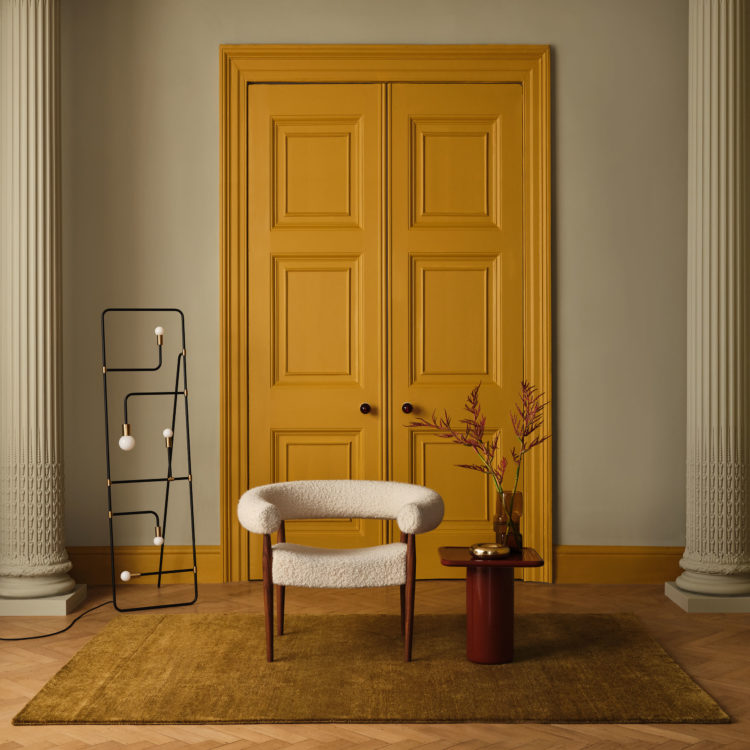
But today, in partnership with that company Graphenstone, which was the brand, incidentally, that the designer Rose Uniacke chose when she set out to create her own range of “14 perfect neutrals”, I have interviewed Patrick Folkes, the CEO. Against a background of pictures of the latest colours, curated by is colour consultant Betsy Smith, he talks about this unique paint that removes CO2 as it cures while cleaning the air and which contains no plastic and no chemicals.
There are 1000 colours to choose from (and they can colour match as well). There are no gloss finishes, as this is impossible to achieve without plastic, acrylic or vinyl, but the two available finishes are a mineral flat matt and eggshell. “Mineral paints absorb and reflect colours and light in a far more beautiful manner than flat, film-forming plastic paints,” says Patrick.
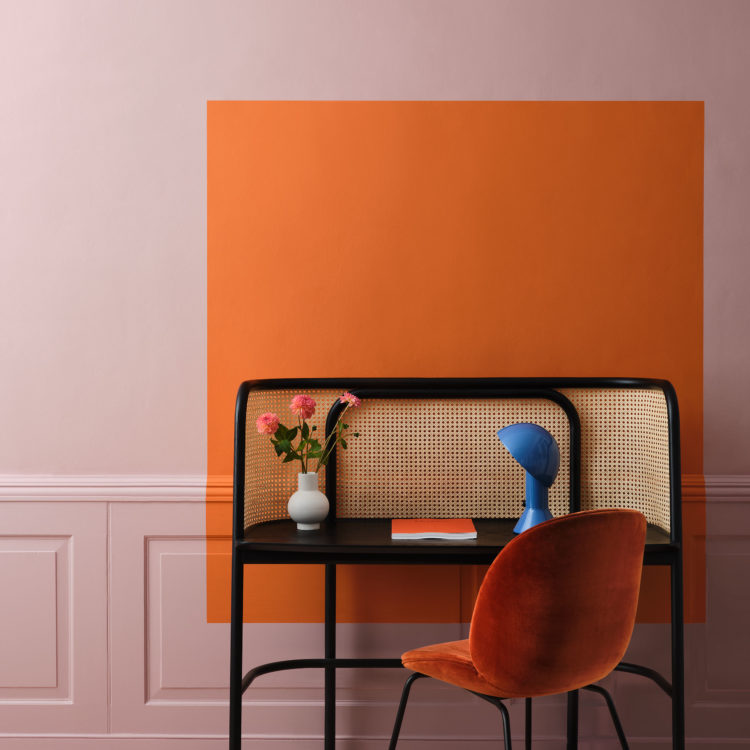
Fifteen litres of Graphenstone lime-based Ambient Pro+ paints will absorb around 5.5 kilos of CO2 (as well as Nitrogen Oxide and Suphur Dioxide) which helps turn your walls into an indoor purification system.
And the company’s Graphclean mid-sheen works on both walls and woodwork so you don’t have to buy two separate pots and end up with more waste. This means you can match your skirting boards to your walls too (which creates a more contemporary feel and will make your room look larger and your ceilings higher) rather than outlining the edges of the room in traditional white.
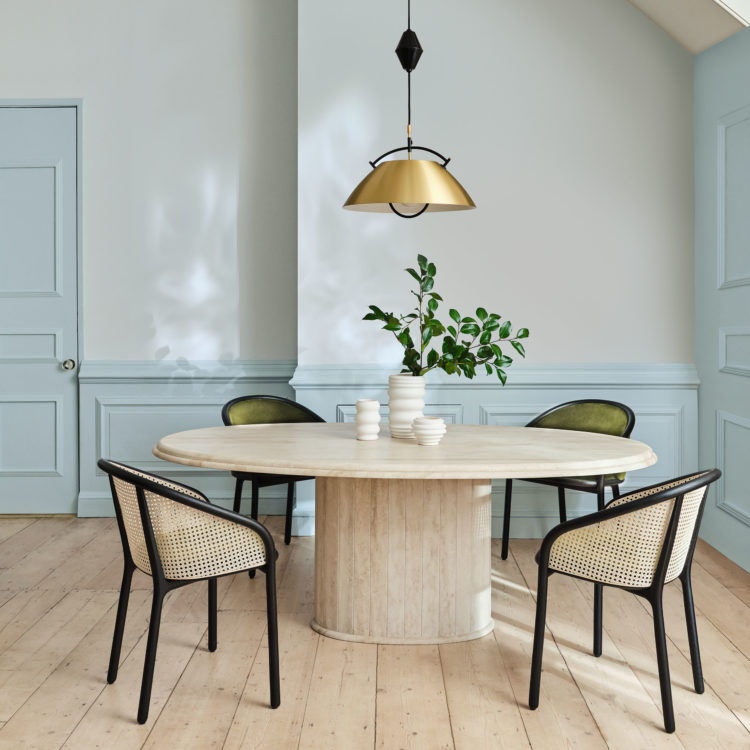
It was founded by a chemical engineer, Antonio Leon Jimenez, who was determined to find a natural, ecological and health conscious coating for the 21st century. He turned to graphene, a Nobel prize-winning material made from inert carbon and the eponymous paint brand (which has featured in my Do Less Harm Directory since it launched) is the first in the UK to contain this substance.
Patrick says: “Paint is a dirty business – a heavily polluting industry – that uses enormous energy in production. It emits vast amounts of carbons, *volatile organic compounds (VOCs) and polluted water and is toxic at point of use – in your home or office – from the heavy chemical contents.
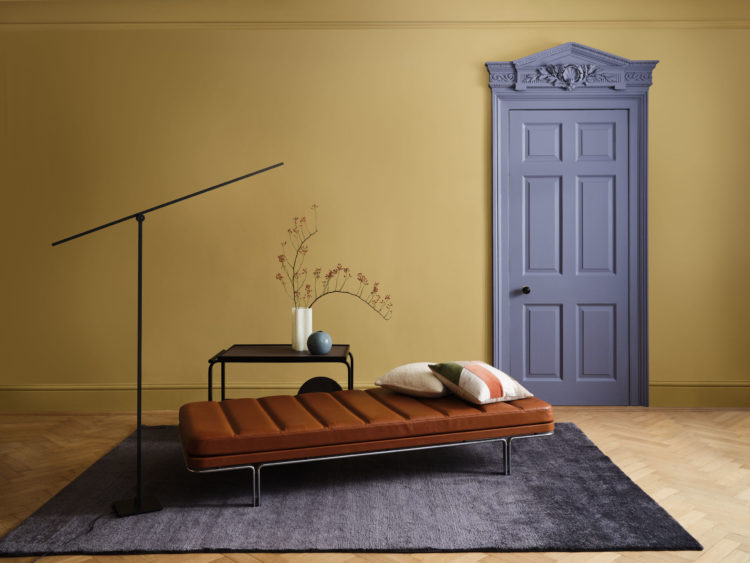
“Graphenstone offered an opportunity to introduce a technically-advanced and certified harm-free paint into a market desperately in need of change. The paint is a fusion of old and trusted materials like lime, clay, silicate and chalk alongside this 21st century carbon technology.”
It is produced in Spain using 100 per cent renewable energy locally from wind and solar with no chemical processes. Its harm-free certifications from globally recognised evaluators include the Cradle to Cradle Institute, Global Green Tag and Eurofins Indoor Air Comfort Gold “more than any other paint brand”, says Patrick.
“These agencies take a holistic look at all aspects of our business inspecting the contents down to 100 part per million before evaluating each one for both health and ecology.
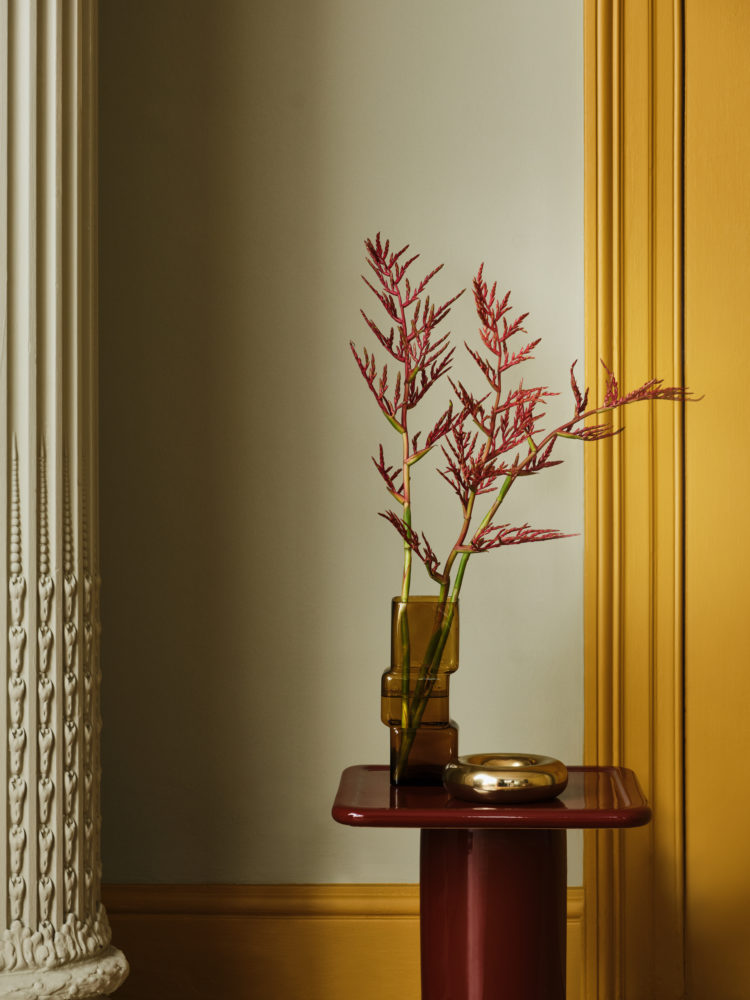
“The Graphene technology also makes the paint durable so it lasts longer and the packaging is 100 per cent recycled and recyclable too, right down to the tape and cardboard used in the delivery process.”
It is, says Patrick, as much about what the paint does NOT contain as what it does: “zero chemicals, preservatives, micro-beads or plastics. Less than 0.1 per cent VOCS (naturally occurring) and our certified (Solingesa) embedded carbon profile is around one fifth of those relatively few other paint companies that have bothered to certify. We’re at 0.50kg per litre of paint against 2.2-2.7kg of other big brands that we’ve identified.
“There are no animal-derived ingredients (and no requirements to test on animals). The paints are 100 per cent natural ingredients using vegetable resins for a 100 per cent vegan blend.”
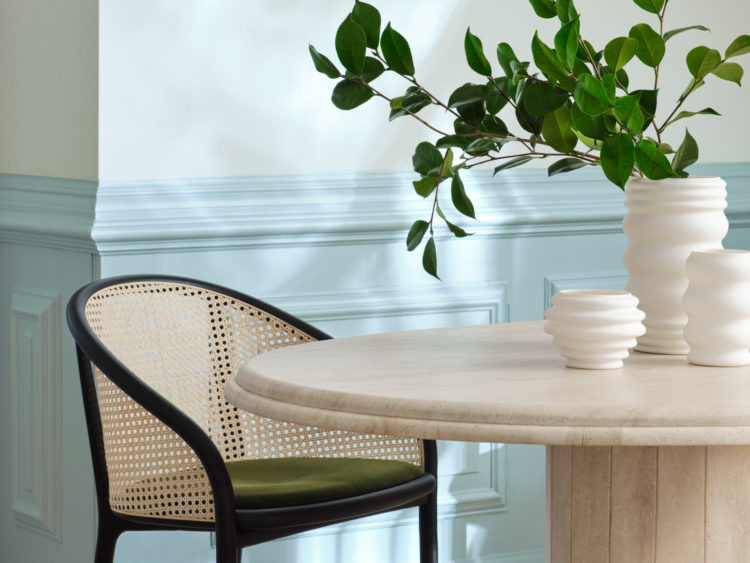
Graphenstone is, says Patrick, not the only paint brand which is chemical-free – there are others which use linseed oil, casein and other natural materials with no requirement for the petro-chemical based toxic ingredients used by many high street brands: “We have no plastics, micro-beads or anything toxic or polluting in our paints. Our VOCs (which are below 0.1 per cent) are naturally occurring and certiifed by many independent evalutions in different parts of the world.”
So now that the science bit is out of the way (and you’ve listened carefully as Jennifer Aniston told you to) what are the colours that Patrick, along with Betsy Smith, the company’s in-house colour consultant worked with the late Terence Conran as head of display, are suggesting for the next season?
There are eight shades, pictured here, which, says Betsy are designed to go with, and enhance, natural materials such as wood, marble, rattan, linen, cork and cane.

“A successful interior should have soul and personality and our environments should be multi-sensory with natural textures and pigments to reduce stress and create calmness and clarity of thought. These paints easy to apply and have a matt, velvety finish.”



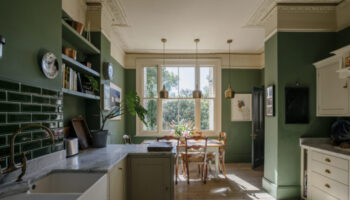
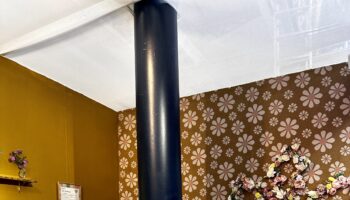
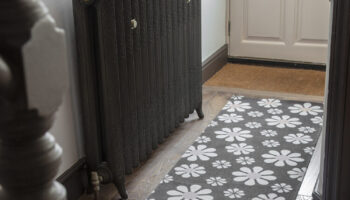
Hi
Are these paints suitable for old Cob homes which need to have breathable paints?
I think what the other commenters are getting at, is that the word ”chemical” refers to natural elements as well – it doesn’t just mean something artificial or harmful. Carbon is a chemical, water is a combination of two chemicals, oxygen and water. When someone makes the claim that their product is chemical-free, they are literally claiming that it has no physical existence at all.
Yes I agree, but I think also it was a shorthand for no “harmful” chemicals. Still, I think it has all been spelled out now so hopefully it’s all clear. It’s more certified than any other brand and it’s very eco!
Thanks Kate. So it looks like no components derived from the petrochemical industry which is fair enough. I notice he says they are using casein which is the main protein in milk so I presume that the paint is therefore not vegan?
If you read closely he says casein is an example of natural materials used by other brands. I have been back to him and he confirms that Graphenstone does not use casein at all.
*sorry, that should be ”water is a combination of two chemicals, oxygen and hydrogen”.
I’m quite taken by that Lovat shade. I would really like to know the full truth about where all the well known luxury paints fall on real quality of ingredients and harm to the environment. I have heard Edward Bulmer hint in interviews that some of the other expensive brands are not as good as they imply, but I am not sure quite which or why. Is this brand different from EB, and is EB different from F&B or Little Greene, or…?
Patrick says: One good test here is to check the level of gloss paint on offer by a paints brand. Without petro-chemical based vinyls and acrylics, you can’t really reach high sheen levels. You need ‘film-forming’ components, which we never use at Graphenstone, which is why we only extend to an eggshell finish, nothing more glossy than that. I’d prefer not to compare or comment directly regarding other brands, since I don’t know for sure what ingredients they do, or don’t contain. The other way to evaluate the claims made is to review their independent certifications as well as the quality of the product evaluators used. One of the most widely respected is Cradle to Cradle Institute (the favourite of architect practices generally), this ensures a very high level of care and attention in respect to health, ecology, ingredients and the circular economy.
Sure, although that also sounds a little self-serving given that the Graphenstone range is limited. I get that glossier paints use more “intense” chemicals, but while a company’s range then (probably) speaks to their overall impact (which is obviously important) it doesn’t necessarily help to compare their flat finishes like for like.
There is one brand (can’t remember which) that explicitly notes that some of their finishes are very low or no VOC and are healthier, but still offers a gloss for those who really want one. That doesn’t necessarily put me off that brand, because it is all a compromise and I appreciate the transparency.
I am a bit torn by this one, because it all matters and I appreciate it, but I agree with some others here that it feels like Patrick is putting more effort into selling his product than really helping us navigate the technicalities of it all. I’ll also add that no nasty chemicals in the final product doesn’t necessarily mean none involved in the manufacture…
Harm free? Does that mean it’s vegan and not tested on animals? Doesn’t mention this important fact.
Patrick Folkes, CEO of Graphenstone, says: ” Yes, there are no animal derived ingredients at all and no requirements to test on animals either. The paints contain 100% natural ingredients, like lime, silicate, clay, chalk and carbonates, using vegetable resins for a chemical free, 100% vegan blend.”
Zero chemicals? They are going to define what they mean by that because it sounds like the emperor’s new clothes if there are no chemicals in paint. Everything is made of chemicals.
I came to say exactly the same thing – as soon as I hear zero chemicals, I assume everything else is equally untrue!
From Patrick: Paints can be made without chemicals! We have no plastics, micro-beads or anything toxic or polluting in our paints. Our VOC levels are below 0.1%! These are naturally occurring VOC’s, and certified again by many independent evaluations in different parts of the world.”
Patrick says: “Graphenstone are not the only paints brand on the market which are chemical free. There are other well-known paints brands that use for example linseed oils, casein and other natural materials, with no requirement for the petro-chemical based toxic ingredients, used by many high street brands. For durability, Graphenstone has fused these natural minerals and materials with inert carbon graphene technology, certified by Cradle to Cradle Institute, Eurofins, Global Green Tag and other globally respected ‘harm-free’ product evaluators. These are very thorough and holistic processes that inspect all aspects of manufacture, product sourcing, ingredients (down to 100 parts per million) and ‘end of life’ ecological characteristics. This ensures that there is professional, independent evidence of our chemical, plastic and ecological claims.”
Patrick says: “Graphenstone are not the only paints brand on the market which are chemical free. There are other well-known paints brands that use for example linseed oils, casein and other natural materials, with no requirement for the petro-chemical based toxic ingredients, used by many high street brands. For durability, Graphenstone has fused these natural minerals and materials with inert carbon graphene technology, certified by Cradle to Cradle Institute, Eurofins, Global Green Tag and other globally respected ‘harm-free’ product evaluators. These are very thorough and holistic processes that inspect all aspects of manufacture, product sourcing, ingredients (down to 100 parts per million) and ‘end of life’ ecological characteristics. This ensures that there is professional, independent evidence of our chemical, plastic and ecological claims.”
I have added a reply from Patrick below (and included his comments in the post) but for some glitch I can’t seem to get his reply to come under your comment.